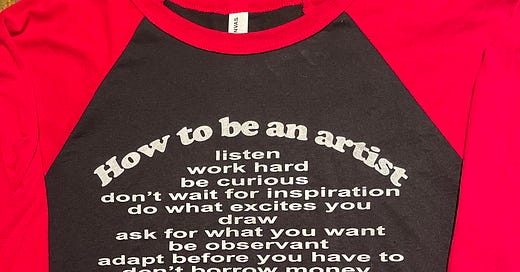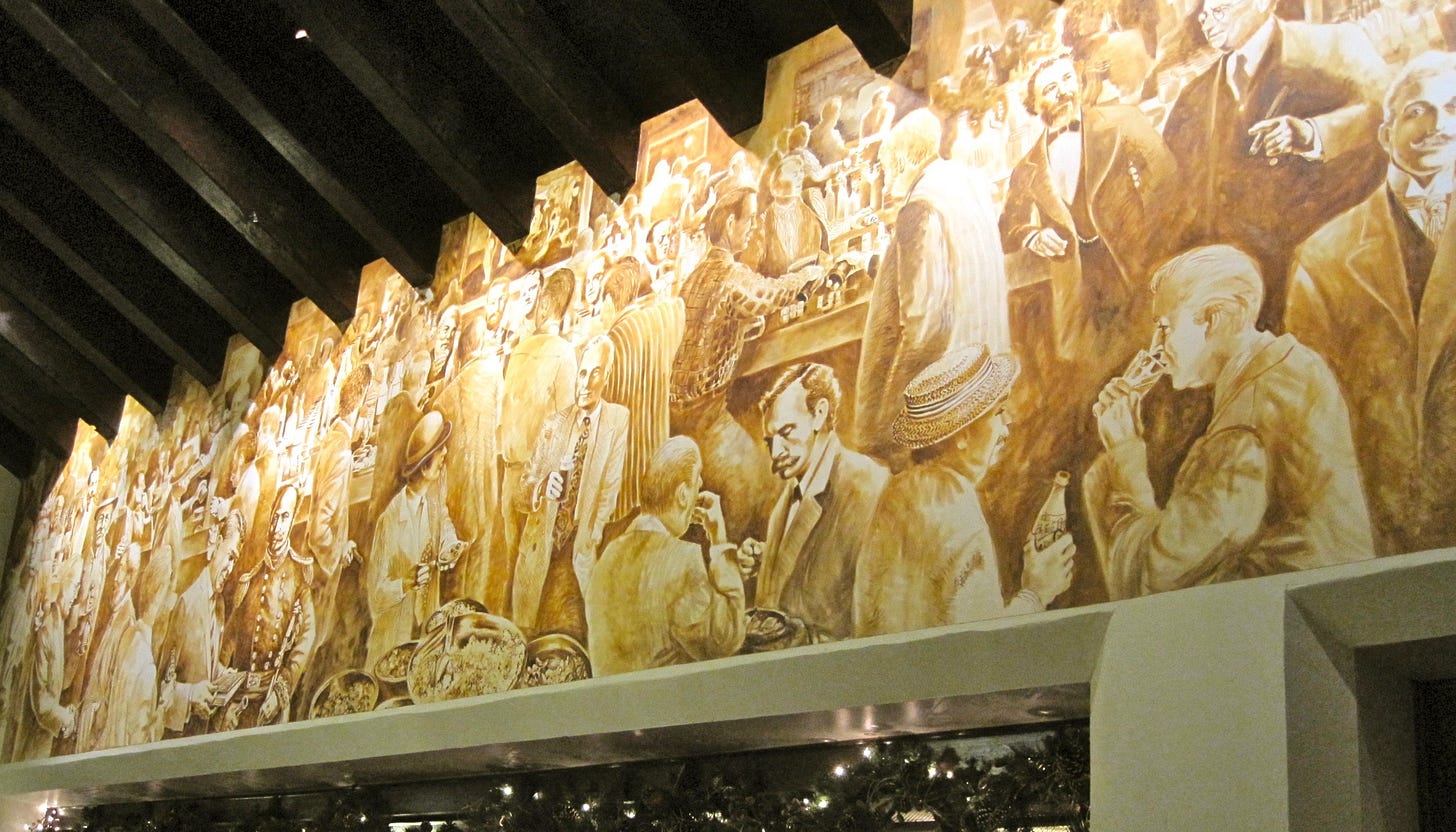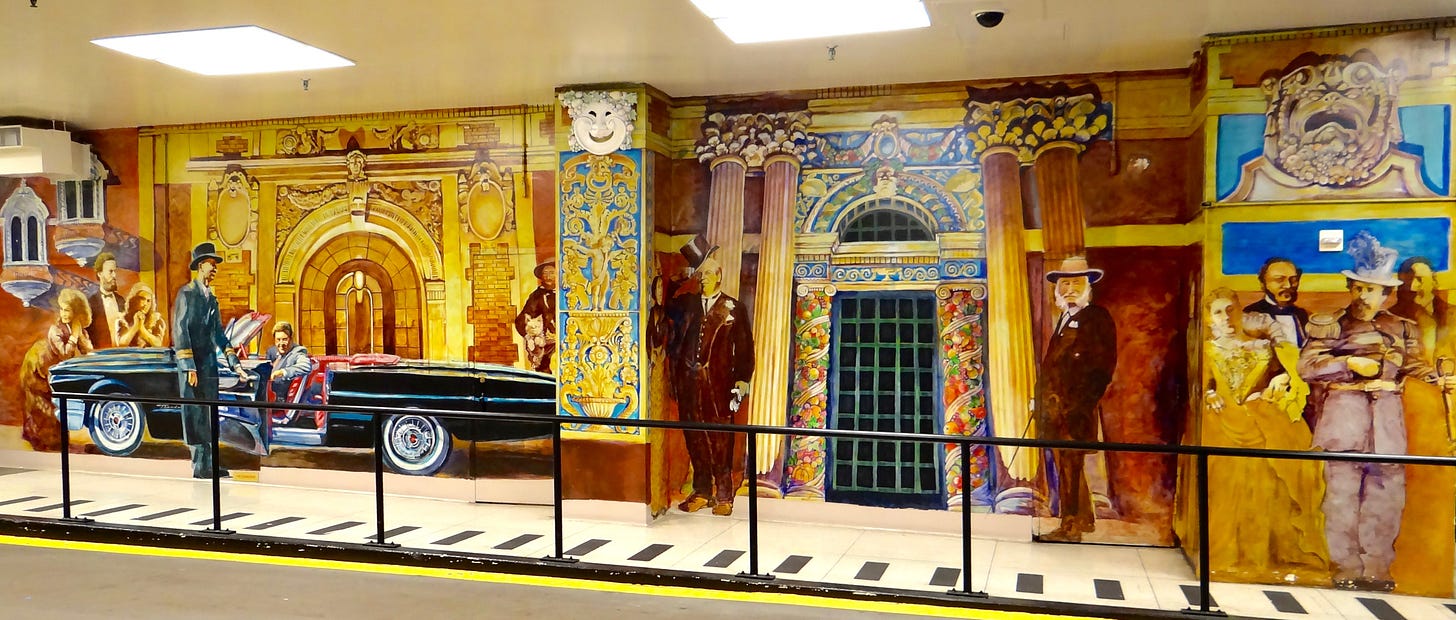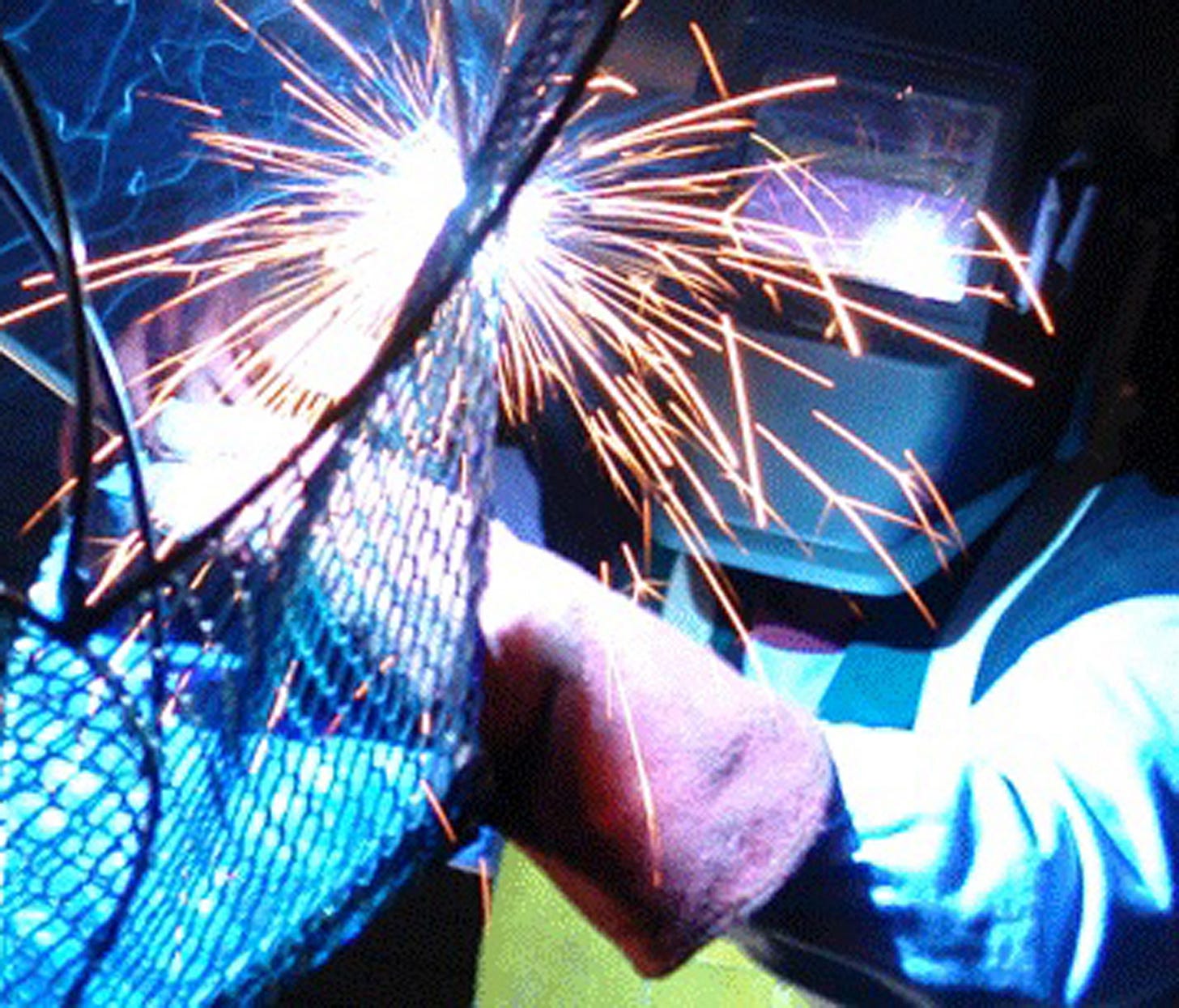As with the environment, the key to survival as a professional artist is the ability to adapt. Over a fifty-year career, I’ve had to adapt many times, most often due to catastrophic events and technology. When graduating from UCLA in 1977, I decided I was too much of a rebel to get a regular job. I knew I wanted to paint murals, transform architecture, and generally create more humane spaces. I called myself a muralist then because there were so few. At least on the west side of LA.
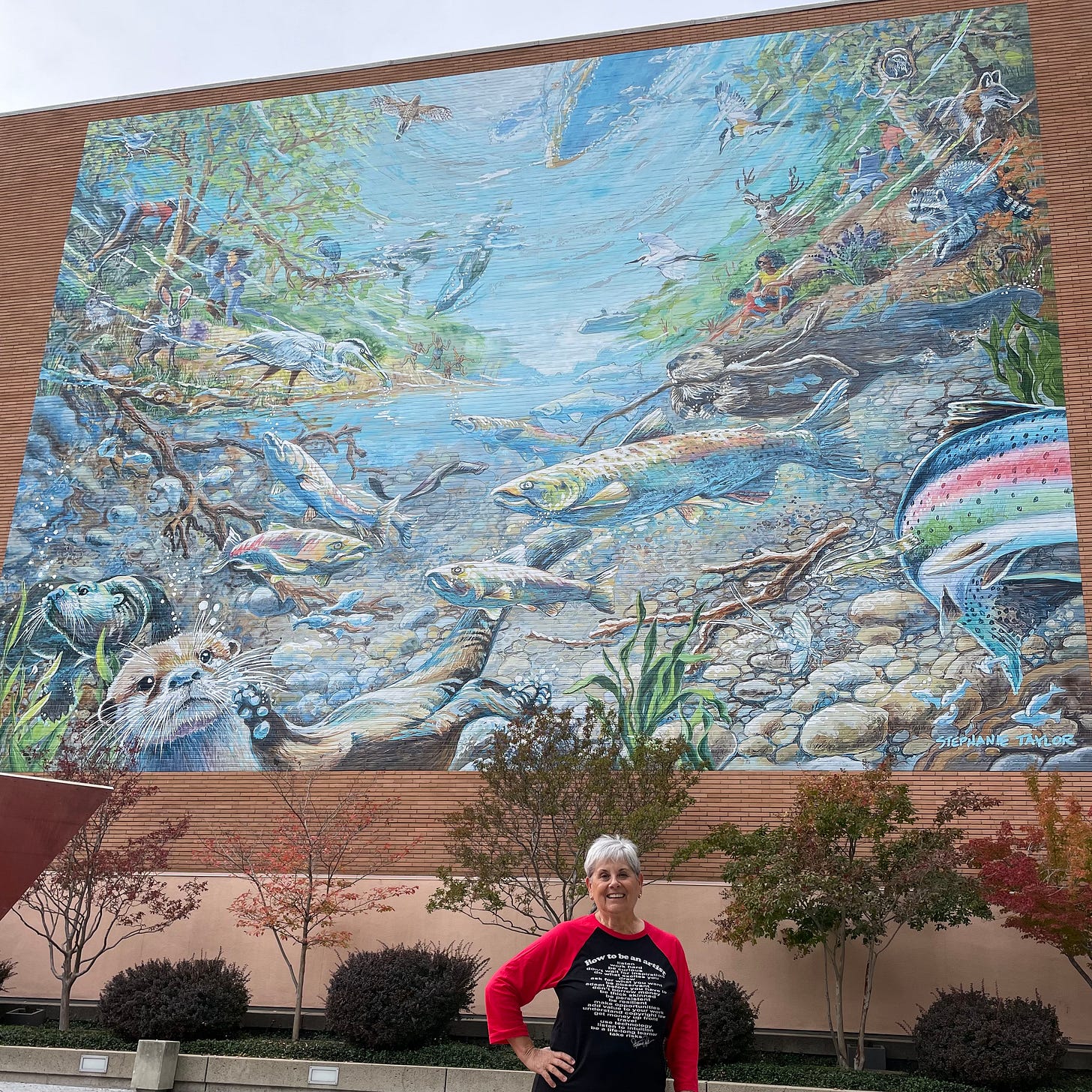
By the early 2000’s, I realized I’d become bored with murals, except for the history/location murals, at least same of the time. In all those years, starting in the mid-70s, whole generations of aspiring muralists had been born. Supply and demand. Too many muralists. Too few clients willing to pay for original art.
Graduate school offered a solution though I had to apply three times before being accepted. I am, after all, quite persistent. (see the tee) During those two years, I bounced between feelings of humiliation and exhilaration. I learned how to throw clay and weld steel. Fantastic.
It cost me a lot of money, not only in tuition but in opportunity cost from the terrific career I’d had. I wanted to make a teeshirt then that said, “$6,000 and all I got was this f__king masters.” The faculty at that time had never made the effort to create a Masters of Fine Arts (MFA) which is a bit equal (they say) to a PhD. (Maybe in some schools, but not mine: meow!) And six-grand was a pittance by comparison.
MFAs had become big business. Chicago, the Ivies, Art Center: $80,000 a year? So expensive that student loans were required. What can a student be thinking? What are the chances that one talented artist will land one of the too few coveted teaching positions?
With all my experience as a professional making my winding way through the world of making art, I was thinking that I could write a book about what it takes to make a life-long living as an artist, or really, any creative. I’d tell real life “war” stories as examples of lessons hard learned. After all, I’d done business with a variety of clients, from Mickey Mouse to museums.
Over a number of years I worked and reworked these stories. It was fun to revisit such a unique career, as if it was someone else, but it was a lot of work. How to structure such a book was an overwhelming question–a memoir of sorts about an artist who bounced all over the place. The chances of landing an agent were slim, and then an agent would have to land a publisher who might end up giving me a pathetic advance and start telling me what to write. I’ve never done will with authority.
And yet, these lessons might have some value. I might save an aspiring artist a hell-of-a-lot of money on graduate school. Because you sure as hell don’t need a graduate degree to be a working studio artist. It’s actually about the last thing you need.
So I made this teeshirt instead.
You can purchase this tee for your aspiring artist friend or yourself. It’s cheap. And worth every penny. Buy this teeshirt now.
This is Stephanie Taylor: essays & art, a newsletter about Constantly exploring with a variety of projects and media, please join me..

